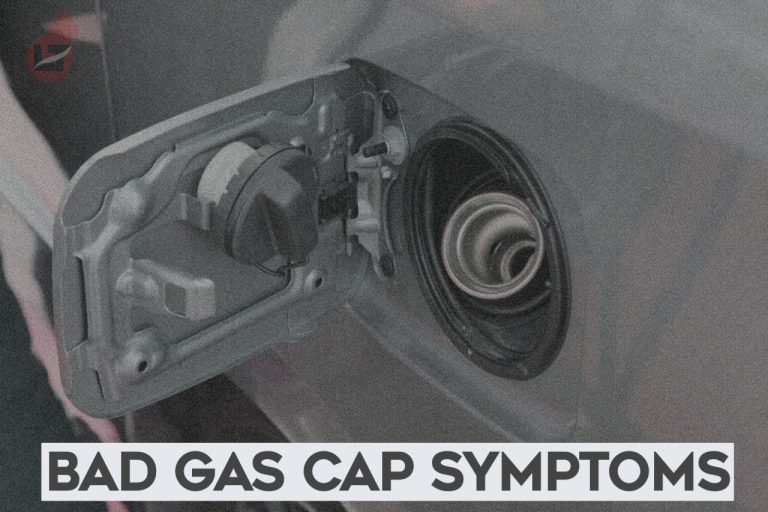Are you curious about the typical signs of a faulty gas cap? Look no further.
It’s crucial to be aware of the primary indicators of a malfunctioning gas cap so that you can address the issue promptly before it harms other parts of your vehicle.
The information presented in this article pertains to all car makes and models. By reading on, you’ll be able to quickly identify the symptoms of a bad gas cap, regardless of whether your vehicle is new or old.
Common Symptoms Of a Bad Gas Cap
It’s important to note that several symptoms associated with a bad gas cap often vary from car to car. However, I will only discuss the common symptoms here.
1. Gas Cap Not Fitting Properly
One telltale sign of a faulty gas cap is an improper fit. If your vehicle’s gas cap doesn’t fit snugly, there’s likely an issue.
Over time, a loose or improperly tightened gas cap has become a common symptom of a malfunctioning cap. This problem was especially prevalent in older cars, which typically had metal gas caps. However, it can also occur in newer cars.
Modern gas caps are typically made from plastic and feature rubber seals designed to create an airtight fit. With extended use, these seals can become stiff and brittle, making it difficult to achieve a proper seal. Dirt and debris buildup can also contribute to a gas cap’s poor fit, particularly in diesel fuel tanks.
2. Smell Of Fuel From The Outside Of The Vehicle
When a gas cap is faulty, fuel vapors can escape from the vehicle, compromising the tank’s seal. This can result in the odor of gas lingering around the car’s exterior and, in some cases, inside the vehicle.
While a bad gas cap is undoubtedly a potential culprit for fuel vapor leakage, there are other more severe reasons why this might occur within your car’s fuel delivery system.
3. Engine Light Inspection
A faulty gas cap can cause problems with your car’s fuel system. Modern vehicles have complex, high-pressure fuel delivery systems that run from the gas cap to the fuel injectors. Any issues within the fuel system can lead to engine performance problems and trigger the check engine light on the dashboard.
A lousy gas cap can allow dirt and water vapor to enter the gas tank, contaminating the fuel and leading to decreased performance and other issues. Regular occurrences of this problem can even cause damage to the fuel injectors.
4. A Lot of Emissions Related Error Codes
Suppose your gas cap isn’t correctly sealing the gas tank. In that case, it can cause fuel vapor to escape and allow contaminants to enter the fuel, potentially resulting in issues with the vehicle’s Evaporative Emission System (EVAP).
Modern cars feature EVAP systems designed to manage the evaporation of fuel fumes from the gas tank. If there is a leak within the system, it will trigger an error that is stored in the ECU memory. This can result in engine code errors, triggering the check engine light on the dashboard and potentially reducing engine performance.
If you notice EVAP-related engine error codes on your dashboard, such as P0123, P0440, P0441, P0452, or P0457, it’s essential to address the issue promptly.
5. Poor Fuel Economy
A faulty gas cap can cause several problems, including poor fuel economy. If your gas cap isn’t correctly sealing the fuel tank, your fuel may become contaminated and evaporate from the tank.
Older cars are particularly susceptible to fuel escaping from the tank, while newer tanks have one-way systems installed to prevent fuel and fuel vapors from escaping through a poorly fitting gas cap. However, if fuel escapes as vapor, it can lead to poor fuel economy as the fuel disappears from the tank.
Contaminated fuel can also cause poor fuel economy, as it can cause problems in the fuel injection management system.
If you experience any of the symptoms of a bad gas cap, you must consult a mechanic immediately. Don’t try to fix it yourself, as you could damage other vehicle parts. A mechanic will know exactly what needs to be repaired and can help you improve the issue quickly.
Frequently Asked Questions About Bad Gas Cap
Q: How To Tell If A Gas Cap Is Bad?
Loose, improperly tightened, or not sealing gas caps are among the most prevalent symptoms of a faulty gas cap. While it may not appear a significant issue, driving your car without a tight seal can expose your fuel system to dirt and debris.
Newer gas-cap designs typically feature a clicking mechanism that ensures a secure seal. If your gas cap does not click or clicks and then comes loose, you should look for other signs of a faulty cap and consider a physical inspection to determine whether a replacement is necessary.
Q: When Should I Fix My Bad Gas Cap?
It is crucial to address a bad gas cap as soon as it is detected to prevent it from causing more significant issues in the future. Delaying the repair of a bad gas cap can lead to severe problems down the line, affecting other components of your vehicle. Therefore, it should be fixed as soon as possible to avoid complications.
Q: Can I Still Drive My Car With a Bad Gas Cap?
While driving a car with a bad gas cap is possible, it is essential to address the issue promptly to avoid potential problems such as reduced fuel efficiency.
> 7e8 and 7e9 Engine Code: A Detailed Overview
As an Amazon Service LLC Program Associate, V. Auto Basics earns from qualifying purchases. See Our Affiliate disclaimer.
